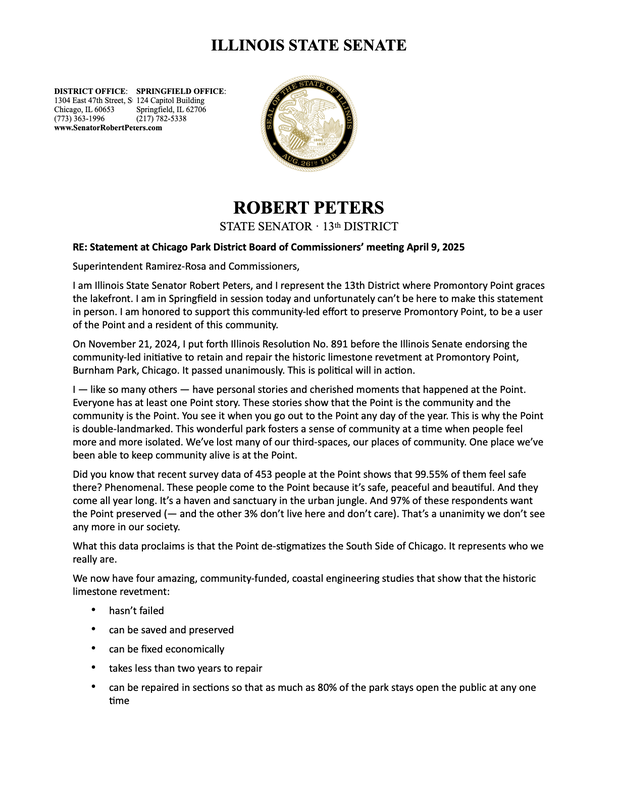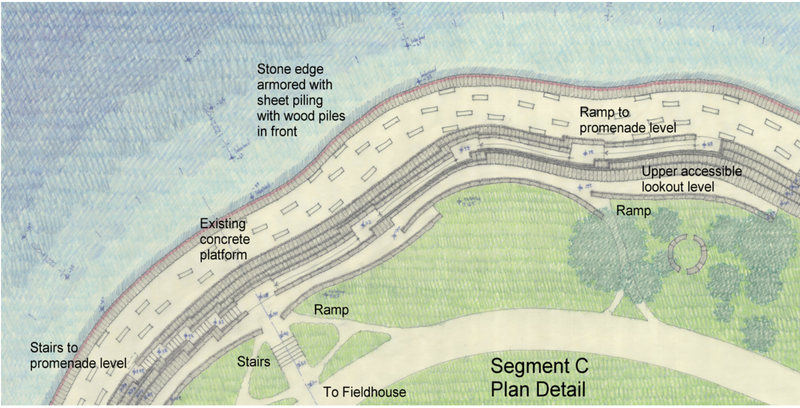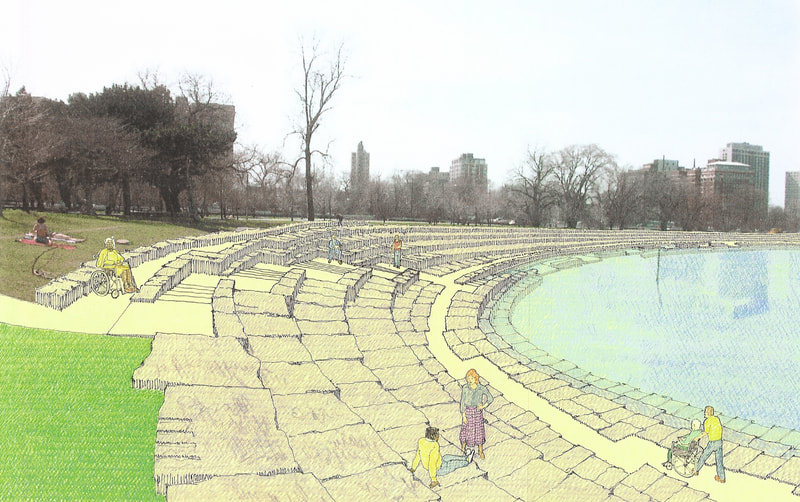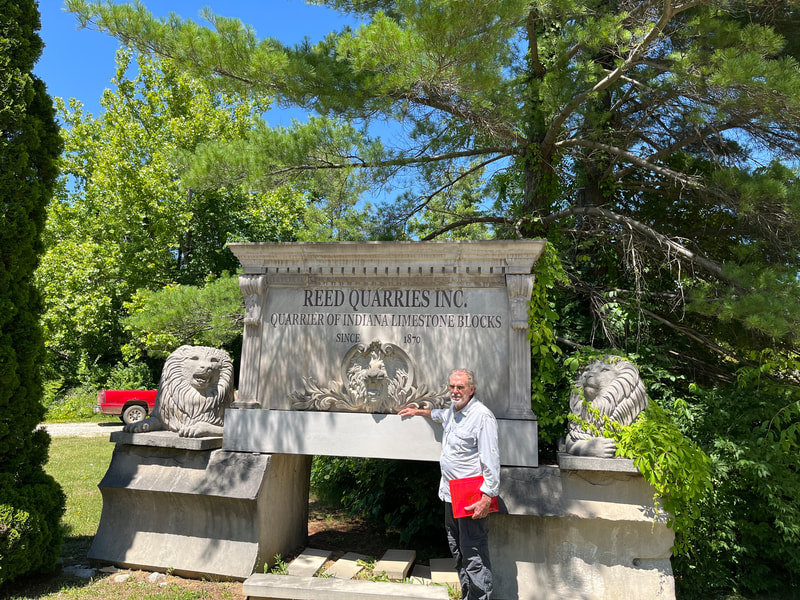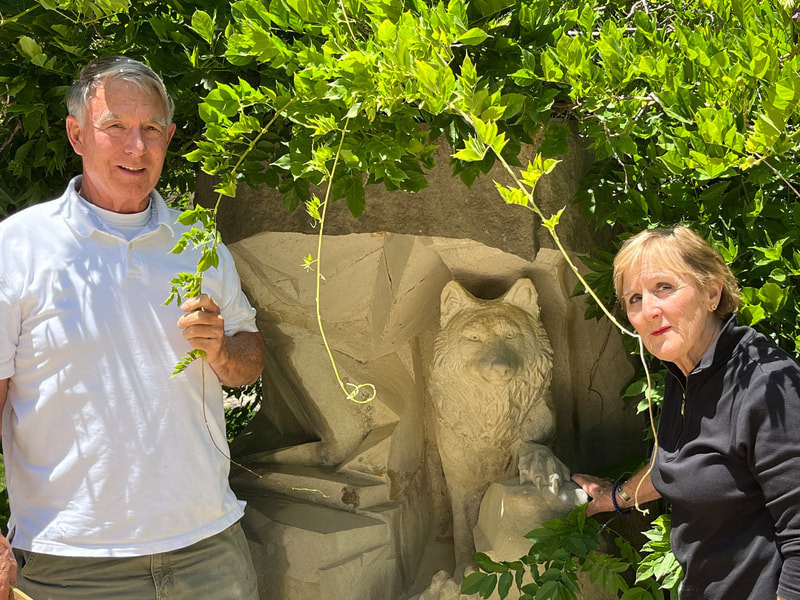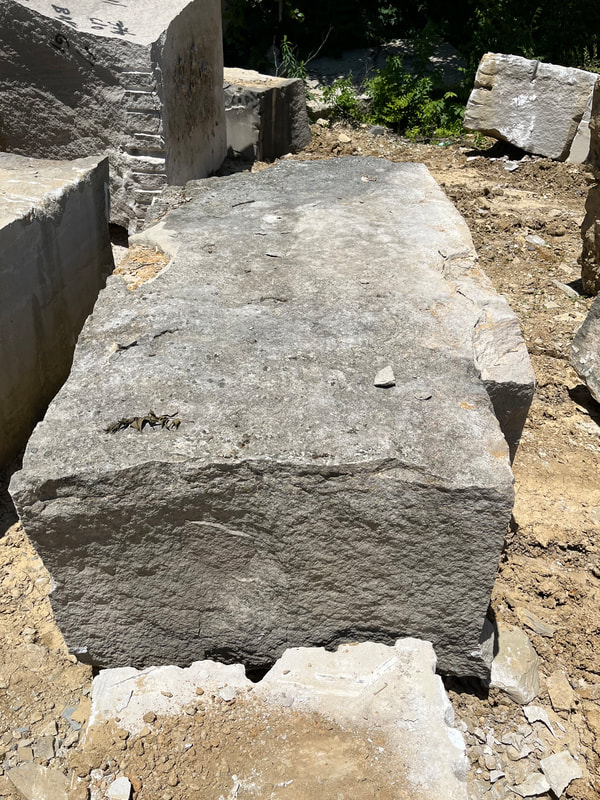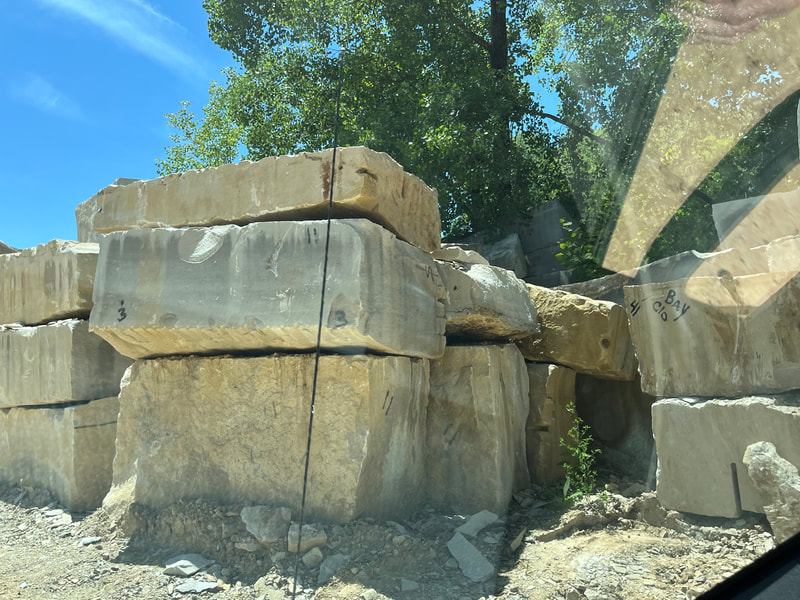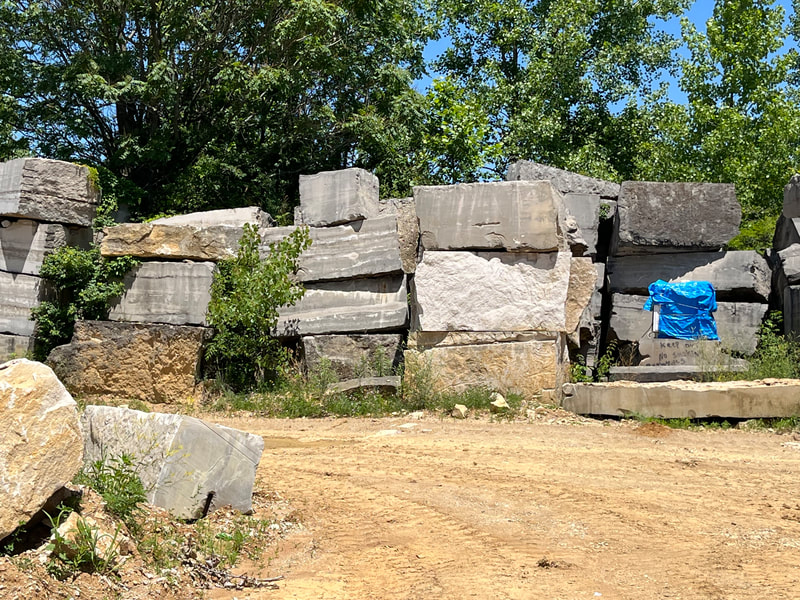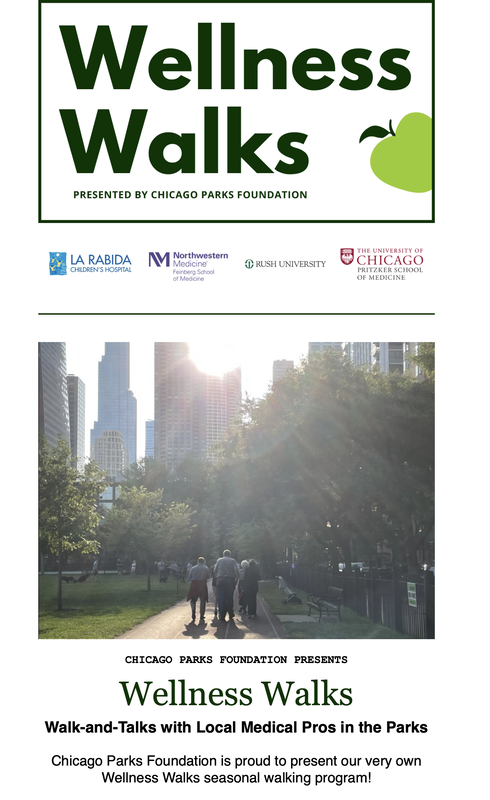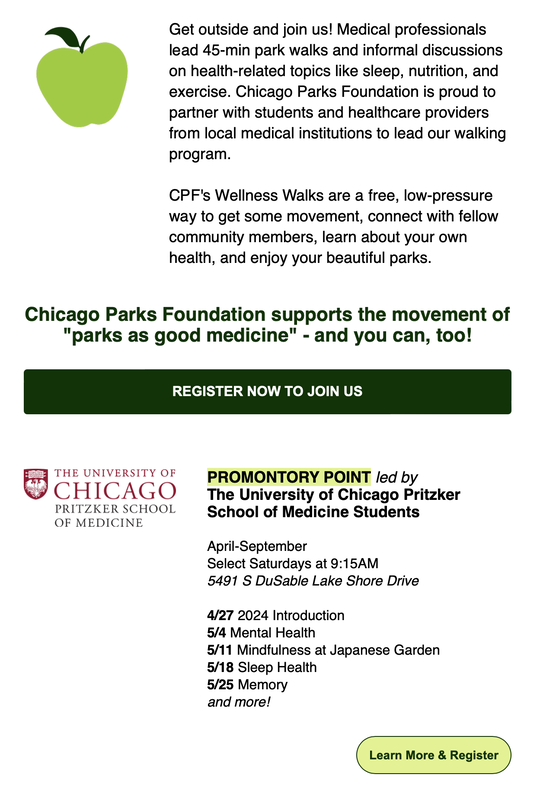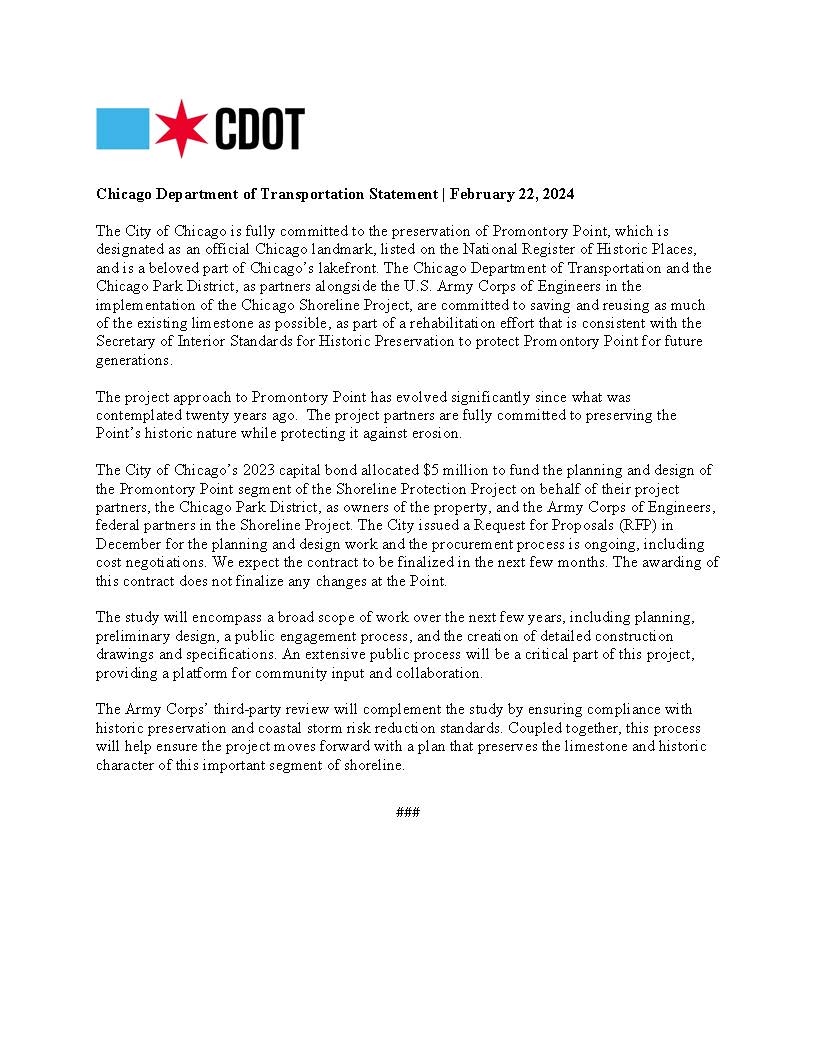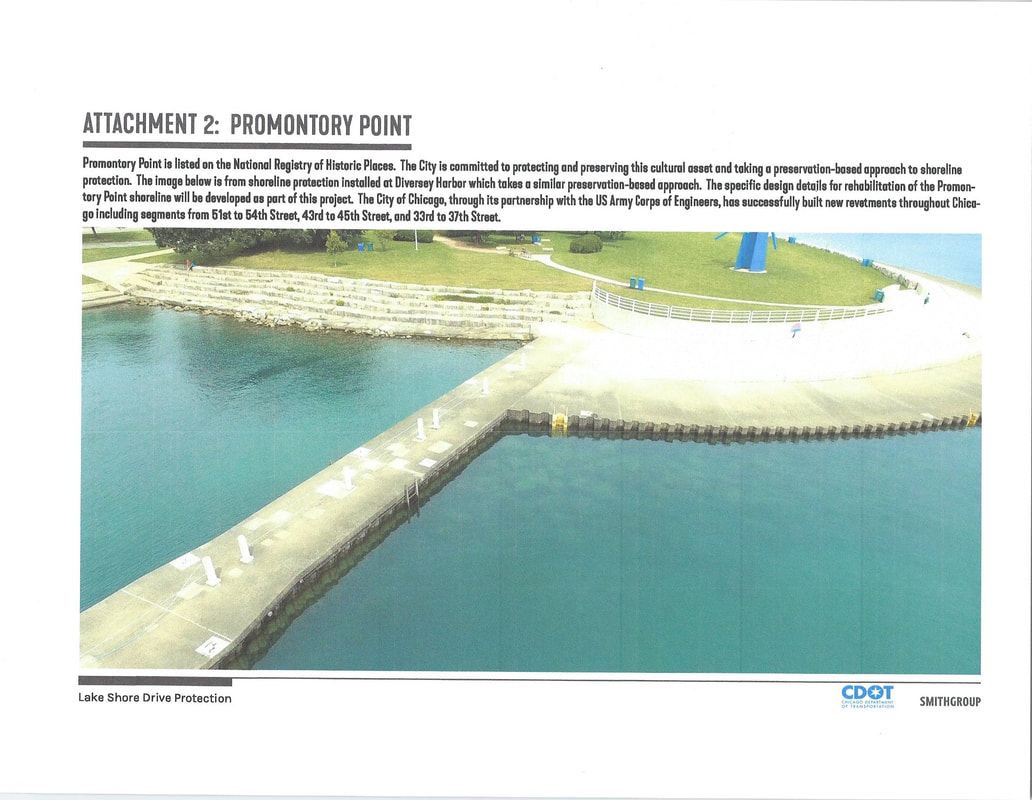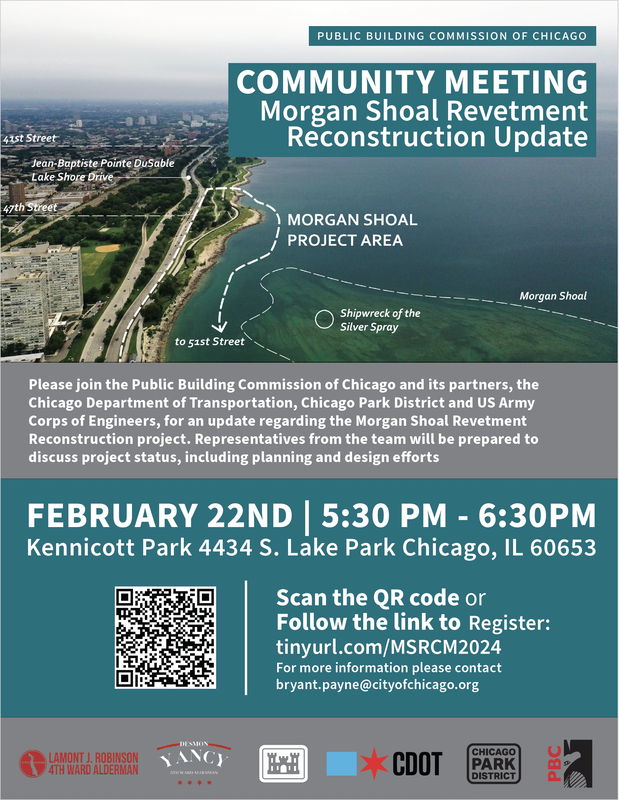|
Swimming in the lake is great because of these two reasons: it's better to swim at the Point because it's fun and it's better than a pool. Read on to find out why swimming in the lake is great.
Let me explain why the lake is better than a pool. The lake changes temperature when the air temperature changes and that saves energy. Unlike pools which need a lot of energy to warm or cool. Lakes don't have chlorine. Pools unfortunately use a lot of chlorine and that makes your skin really dry. Pools cost a lot of money and a lot of people can't afford to get a membership at a local pool. But the lake is free and you can just walk to or bike to it. Swimming at the Point is better than a pool. and it is fun because you can have a party at the Point and swim! The Point is a good place to take pictures and fly drones, but pools you can only swim in. Because at most pools you can't take pictures and that is why I think the lake is better than pools! So now you know why swimming in the lake is great and is great for the environment and is better than a pool.
0 Comments
Landmarks Illinois statement to the Chicago Park District Board of Commissioners, April 9, 20254/9/2025 FOR IMMEDIATE RELEASE
Wednesday, April 9, 2025 Contact: Jack Spicer +1.872.226.2240 Debra Hammond +1.312.285.4761 [email protected] Promontory Point Conservancy congratulates Carlos Ramirez-Rosa on his new role as CEO and Superintendent of the Chicago Park District. We are issuing this press statement because our speaker requests were denied, and we are unable to present our engineering studies at the Chicago Park District Board of Commissioners’ meeting today. Promontory Point Conservancy is the community-led group that advocates to Save the Point! The U.S Army Corps of Engineers (USACE), the City (Chicago Dept. of Transportation, CDOT) and the Chicago Park District are fully funded for design and construction for the Promontory Point Project. These agencies appear to be backing into demolition of the historic limestone revetment and its replacement with a concrete revetment with limestone veneer at $100m. The Conservancy has conducted four new community-funded, coastal engineering studies of the limestone block revetment at Promontory Point on Chicago’s South Side. These studies prove that the limestone block revetment:
We ask Superintendent Ramirez-Rosa and the Chicago Park District that:
### Attachments: Alternatives Design Study, summary/factsheet and cost comparison examples, McLaren Engineering Group, January 14, 2025 Coastal Vulnerability Analysis and factsheet, McLaren Engineering Group, January 14, 2025 Historic Structures Report: Promontory Point and factsheet, Wiss, Janney, Elstner Associates, LLC, January 9, 2025 Condition Study and factsheet, McLaren Engineering Group, April 4, 2024 Landmark Designation Report: Promontory Point, City of Chicago, Dept. of Planning and Development, March 9, 2023 National Register nomination report, Promontory Point, November 2017 McLaren’s credentials on U.S. Army Corps waterfront projects At our community meetings, you asked questions for our coastal/structural engineers McLaren Engineering Group and for the Chicago Division of the U.S. Army Corps of Engineers (USACE). Here are their responses to your questions. Question: If the U.S. Army Corps expects its plan to take 5 years for construction, how long would it take to complete repair and rehabilitation work at the Point? Answer: Brian Moody, McLaren Engineering Group: A lot depends on how you define the start and end of the project. Assuming you’re only talking about the revetment, our plan presented in the Alternatives Design Study, reusing most of the stones in a rebuilt structure, could easily get between five and ten linear feet a day of production completed. (Maybe more, once the work gets rolling.) With 3,050 linear feet around the perimeter of the Point, that could be as quick as 305 working days. (The total linear feet at the Point is 3,150. One hundred linear feet is the concrete ADA ramp at the south most end of the Point at the 57th Street Beach.) So less than one year to complete repair and rehabilitation per our plan if you’re able to work year round. If work must be seasonal, then no more than two seasons. Also, it could be reasonable to perform the work in phases, allowing as much as 80% of the park to be open at any time. ### Question. The McLaren Condition Study rates the limestone revetment as pretty good for the Corps' purpose of erosion control. And McLaren's Vulnerability and Alternatives Design reports use the Corps' research to conclude that the revetment needs repair but is safe as is. Has the Corps considered doing nothing and just letting the revetment erode like a natural shoreline? Much like a natural shore on Lake Superior or in Maine? Has the Conservancy considered that alternative? Answer. Brian Moody, McLaren: The intent of our Alternatives Design Study was to restore and preserve the existing, historic fabric of the structure at the Point. Allowing the revetment to continue to fall into disrepair would allow for the continued loss of upland park area, reduce safety for park patrons, and erode the connection and integrity of the historic structure. Repair and maintenance of the limestone block structure are called for. Answer. Mike Padilla, Chicago USACE: The Corps studies always include the “do nothing” alternative. In the case of the 1994 Chicago Shoreline study, that alternative was not selected, probably because it was recognized that the revetment “needs repair” as stated in the question. ### Question. What are the advantages and disadvantages of constructing a revetment with limestone versus concrete? Answer. Brian Moody, McLaren: Advantages of limestone
Question: How can it be economical to repair the limestone revetment when you have to source all that limestone from Indiana? It’s not even coming from Illinois which would at least keep public dollars in the state. Answer. Brian Moody, McLaren: McLaren’s Condition Study concludes, among other findings, that the individual limestone blocks have certainly not failed and 97% of them or more are in good condition to be repositioned on site. Of the 4,500 individual limestone blocks comprising the revetment right now, only a few dozen need replacement with in-kind materials, new blocks. It is very possible that these new replacement blocks are also on site and can be repurposed and repositioned. When the concrete platform, the coffins, was constructed in 1964-65, the limestone blocks that comprised the original promenade were thrown in the water and can be seen right off the concrete coffins. There is a significant inventory there even as it has not been investigated and catalogued to date. We suspect there are more than enough blocks in the water that can be used in the repair and rehabilitation of the historic revetment. Repositioning and repurposing limestone blocks on site is a major source of the cost savings that a preservation approach offers versus the more costly demolition and construction of a new concrete revetment. Conservancy answer: Last May, the Conservancy visited the quarries in southern Indiana to find out the actual costs of sourcing new limestone blocks — just in case. First, these are waste blocks called breakwater blocks. Twenty percent of what's quarried is the desired unblemished, buff stone seen on building facades from the University of Chicago campus to downtown to the Pentagon. That means that 80% of what’s quarried are the breakwater blocks that could be used at Promontory Point. There are literally thousands and thousands of these breakwater blocks stacked and stored at some of these quarries. The Conservancy got a price as low as $240/block> (A buff block goes for $2,000-3,000) So, even with transportation costs, the cost for new replacement blocks is under $1,000/block. ### Question. The original Burnham Plan for the lakefront had islands acting as breakwaters to protect the Chicago shoreline. This seems like a very good solution for minimizing wave forces and erosion damage to the City’s lakefront parks and spaces. There are effective breakwaters left at Steelworkers Park. Has the Corps and the City considered breakwaters offshore these South Side parks like Morgan Shoal and the Point? Has the Conservancy considered this alternative? If not, why? Answer. Brian Moody, McLaren: Offshore breakwaters could be an effective option at the Point, although not required. If the Corps and the City decided to build a breakwater, the limestone block waterfront structure would still require repair and rehabilitation as well as maintenance. Answer. Mike Padilla, Chicago USACE: The offshore islands were, indeed, part of the Burnham Plan. However, in the 1994 study, whole islands were not evaluated. Standard “High Crest” rubble mounds were evaluated in Plan II of the study but were not part of the selected plan. Those type of rubble mounds, while being overall smaller than the islands of the Burnham Plan, are very large and were not seen to be cost effective. The team knew by extension that the islands would not be cost effective either. ### Question. With water levels low, you can hear waves splashing underneath the concrete coffins. Is Promontory Point going to fall into the water? Is it going to wash away? Answer. Brian Moody, McLaren: The coffin structure is massive (approximately 5+ feet thick) and spans between rows of continuous timber piles. This reinforced concrete structure exhibits only minor deterioration and is stable even with the voids beneath the platform. We do recommend that these voids be filled. In our Alternatives Design Study, we offer a grout bag solution to fill the erosion cavity beneath the coffin platform. But Promontory Point is not going to fall into the water anytime in the foreseeable future. ### Question. Why did the existing structure fail? Is it the result of poor design, poor maintenance or some other factor? Answer. Brian Moody, McLaren: The structure has not failed. McLaren and Wiss, Janney, Elstner Associates did extensive above water and below water analysis of the existing structure to determine that, in fact, it functions in overall good condition. Deferred maintenance has resulted in some erosion of the subgrade material under the promenade causing the settling of the limestone blocks. And the erosion in the parkland is caused by lack of adequate drainage of water from the blown spray of storm waves. Over time, this erosion of the parkland has not been replaced with new topsoil and grass seed. The revetment and promenade can be economically repaired using current technology and techniques which will increase the resiliency and useful life of the structure. ### Question. Is the settling of the stone structure related to wave action or to compaction? Answer. Brian Moody, McLaren: Where settling of the individual stones is observed on the promenade portion of the structure and at the top of the stepped stones in the parkland, wave activity and stormwater runoff has made its way into the soil, under and behind the stones. As water returns to Lake Michigan, it carries fill material — whether the subgrade material under the promenade blocks or parkland — out slowly over time. This erosion process leads to displacement of the stones. Using filter fabric and properly sized gravel subgrade can allow for water to pass through the soil, under the stones, and back into the lake without causing similar erosion and undermining of the stones. Our Alternatives Design Study recommends use of these materials to stabilize and lengthen the life of the structure. ### Question. Is it possible to build a limestone revetment that will last? Answer. Brian Moody, McLaren: The limestone revetment has lasted nearly 100 years with little or no maintenance. That’s pretty good. Any structure built on the waterfront will require maintenance and upkeep over time. Rebuilding the revetment as described in our Alternatives Design Study will provide a more resilient structure, which can last indefinitely with periodic maintenance. ### Question. Can the limestone revetment be structurally supported without the use of steel sheet pile? Answer. Brian Moody, McLaren: There are several ways to reconstruct the Point that will provide the same look as was provided 86 years ago. The purpose of the piling, whether timber or steel sheet, is to keep the subgrade material in place under the promenade and protect it from wave force scour. With the piling protecting the subgrade material, the block promenade stays stable and interlocks into a strong structure. The Alternatives Design Study explores several options for the water facing edge of the promenade including replacing the timber piling, which is a perfectly good solution when protected, and reinforcing the existing timber crib with concrete. Another alternative in the Study uses steel sheet pile rolled out along the existing crib structure. All of our alternatives maintain the historic fabric of the limestone block revetment and promenade. ### Question. Is there danger of flooding DuSable Lake Shore Drive from overtopping waves at the Point? Climate change would seem to predict bigger waves and bigger storms. Answer. Brian Moody, McLaren: No. There is no evidence that overtopping waves have damaged the Drive or the Point. There is erosion damage from loss of subgrade material beneath the promenade and lack of adequate drainage in the parkland. From the publicly available materials from the Army Corps and CDOT, there is no evidence that these agencies see flooding danger or damage at the Point. Our Coastal Vulnerability Analysis of a repaired limestone block structure shows that the structure meets the USACE and the City’s extreme wave conditions of +6.8 (2020 storm) and a non-historic +7.7 design wave for coastal resilience. Promontory Point Conservancy: It’s hard to predict the effects of climate change at the Point. Right now, water levels are below average and falling due to increased evaporation, possibly caused by warmer winters and less ice coverage. Plus the sand beach that's forming at the north end of the Point as sand from 39th Street Beach drifts and settles at the Point because of its groin effect could minimize wave energy on the north side. It’s difficult to predict. ### Question. In your design plans, please add an easy way for folks to enter the water on both the north and south sides of the Point. I know people aren't supposed to swim there, but we all know that many people do and access is limited for those who aren't overly athletic. Answer. Promontory Point Conservancy: People have been swimming at the Point since the 1920s, before it was a park: that’s nearly 100 years of people deep water swimming from the north and south sides of Promontory Point. Lake Michigan continues to be Chicago’s best cooling station. In our Alternatives Design Study, on pages 25-32, we offer Universal Design Access (ADA compliance) upgrades at three locations along the perimeter of the Point. We worked with our coastal and structural engineers McLaren Engineering Group and with Universal Access architect Frank Heitzman on these options. At the south edge of the Point at 56th Street, the City has already put in an ADA ramp. It’s not particularly easy to get to and the slope is steeper than the preferred 1:20” grade but it does provide access now to the limestone promenade on the south side and the concrete at 57th St Beach. We are proposing some upgrades there to make it more useful for access to the promenade and the water. At the east end where the coffin concrete platform is in place, we are proposing multiple options for accessibility with graceful ramps down to the promenade as well as for riser-long tread stairs (stramps) for those with walkers and canes. These ramps/stramps would be provide easy access for wheelchairs but also for strollers and children to the promenade and the water. At the north edge of the limestone revetment, where it connects with the concrete revetment north of the Point, we again are proposing 1:20’, graceful ramps and stramps from the Lakefront trail down to/up from the concrete and limestone revetments. Again, these would be for those in wheelchairs, with canes and walkers, but also strollers and children. The ramps would make it easy for kids, dogs and their families to get down to the shallow swimming area on the north side of the Point. Finally, in the Alternative Design Study, for example pages 8, 18, 22 and 23, show riprap toe scour protection and alternative toe protection of limestone block steps. These recommendations for toe scour protection in the water protect and strengthen the water facing edge of the revetment. The rubble mound restores the original 1937-1939 structure. But, for access into the water, more limestone block steps down into the water at various places might accommodate. Right now, we are working with an illustrator to create visitations and renderings to make dry engineering drawings more comprehensible so stay tuned for these. I am attaching renderings the Conservancy did for its 2003 engineering study of the Point which are still viable options to give you some clues to what we’re talking about. From what we know about the USACE/CDOT plan, access to the water would be prohibited. The concrete revetment would provide ladders into and out of the water but are really for someone who falls in, not for swimmers. ###
Question: I am an avid swimmer and I want to dive off the limestone blocks into the water, like into a swimming pool. Why is the toe scour protection necessary? Can’t you do away with it? Answer: Brian Moody, structural engineer, and Lisa Bratton, coastal engineer, McLaren Engineering Group: This could be accomplished whether the limestone is repaired or the City installs a concrete replacement. We can design and construct anything. There are multiple issues and problems, however, that such a design would create for coastal resilience. And promoting diving could open up liability issues for the property owner. You may be able to re-design it in a small, restricted area to allow for diving into the water, assuming it’s deep enough at that location. Since we are focusing on a preservation approach, the primary reason for the toe protection is to protect against scour at the base of the revetment, which can lead to loss of fill beneath the promenade. The loss of fill is one of the driving factors for repair of the existing structure. So "doing away with it" makes the structure more susceptible to loss of subgrade material at the base under the promendade blocks. It would create future stability and durability issues. Additionally, if we look at increasing the water depth in an area for diving, that would create an environment for greater wave heights, increasing the potential for scour in that area. In some of the proposed toe protection designs in our Alternatives Design Study, we include continuing the limestone blocks to step down into the water as an alternative to rubble mound for toe protection. That design may allow for more easy access and diving into the water. Toe scour protection was also part of the original 1937-39 construction and, as part of the historic fabric of the structure, would be restored in our alternative designs. The toe protection also meets USACE and CDOT’s requirements for storm damage and erosion resilience by greatly diminishing wave energy hitting the revetment. So, toe protection meets both preservation and coastal resilience requirements. ### Question: There have been several mentions of the importance of "maintenance" (e.g., the Point's current condition is because of the lack of maintenance; the Conservancy's proposal would have a useful life of 100 or more years if periodically maintained). a) Recognizing that assumptions about the frequency and intensity of future storms are necessary, what would a Point revetment periodic maintenance plan look like in terms of frequency of inspections, disruptions to access for inspections/repairs, and range of costs? Answer: Brian Moody, McLaren: The revetment, promenade and toe protection should be examined above water and below water at least every 10 years, ideally every 5 years. The maintenance study in the 2004 Kalven Mediation Report remains basically valid and only needs to be updated for costs which I believe the Conservancy has done. If the approach taken in the Alternative Design Study of using new technology such as marine mattresses and geotextiles happens, it is very likely that little to no maintenance would be required over the first 20-40 years of the repaired limestone block structure. And costs would be modest with these technologies. Since the revetment can be repaired and rehabilitated with minimal disruption of the park, we would expect maintenance to be even less. And maintenance of the limestone revetment would be less expensive than maintenance of a concrete revetment. b) For reference, if there are similar revetments that have the benefit of a periodic maintenance plan, please identify the location(s) and the responsible agency(ies). Answer: Conservancy: We are aware of the historic stone seawall at Ellis Island that the National Park Service maintains. (A revetment is a special kind of seawall.) NPS has at least six other historic seawalls, some waterfront forts, that it maintains. c) If you know, does CPD have a budgeted periodic maintenance plan for the concrete shoreline protection structure already built? Answer: Conservancy: No, CPD does not have budget for periodic maintenance for the concrete revetments. CDOT and USACE have made major overhauls of the concrete revetment at its half life at Fullerton, North Avenue and Foster totaling about $250m. At the Morgan Shoal community meetings in winter/spring 2024, Heather Gleason, Director of Development and Planning at the Chicago Park District, said that the Park District has no funding and no plan for funding any maintenance of the proposed design at Morgan Shoal. We presume the same is true for Promontory Point. CPD does not budget for maintenance of any of its parks. For the past six years, CPD has no funds for a park supervisor or maintenance at the Point. We have been drawing their attention to the need for repairs to the historic Council Rings and to a broken water main without success. As referenced in the Alternative Design Study and the Historic Structure Report, CPD has a broken water main that is causing erosion to the parkland and the revetment (outside the scope of storm damage and shoreline protection), and creating a recurring sink hole on the pathway near the field house. Although we have asked for maintenance here, none is forthcoming. (In fact, we were told that because we are not a PAC and have no legitimate standing with CPD, we could not submit items for budget requests for park upkeep so we have to go through the Alderman’s office.) # # # Question: Marine mattresses are proposed to address the scour drainage issues. If there are there existing installations in similar settings, how have they performed and what sort of periodic maintenance has been required? Still awaiting McLaren’s response. Question: If any of USACE / CDOT / CPD / etc. (or their consultants) have issued public comments on the work product of the Conservancy's consultants, please summarize and provide links. Conservancy: In Block Club Chicago on December 6, 2024, CDOT said “The city and the Army Corps will . . . discuss how to incorporate the conservancy’s work into the official project plans” once a programmatic agreement is reached. An email, dated April 22, 2025, to the Consulting Parties, from USACE’s senior project manager Mike Padilla said that USACE is not funded to read our studies. (Happy to share this very public email if you’re interested.) In an informal meeting with Heather Gleason, CPD, on April 9, 2025, she stated that her definition of preservation and the SOI standards is decorative limestone blocks in the parkland much like seen in the Morgan Shoal design. She insists that CPD and CDOT are committed to “saving, “reusing” and ‘repurposing” as many limestone blocks as possible for this design. These statements about repurposing and reusing as many as possible were made by CPD and CDOT spokespeople at the Commission for Chicago Landmarks public hearings in January 2023: https://www.youtube.com/watch?v=TuiH1xEa6XU&t=11s . CDOT has issued two press statements in response to the April 2024 McLaren Condition Study which Alderman Desmon Yancy read at our press conference on April 4, 2024 (https://www.youtube.com/watch?v=tBb4kPedvjw&t=6s), and in response to the Conservancy’s complaints about the clandestine RFP to preferred contractors for the $5m design study of the Point in February 22, 2024. (Here’s CDOT’s press statement: https://www.promontorypoint.org/latest-news/chicago-department-of-transportation-statement-2222024 . Here’s our press statement reply on February 26, 2024: https://www.promontorypoint.org/latest-news/promontory-point-conservancy-holds-the-city-to-its-preservation-commitment-at-promontory-point) # # # Question. The old line, ”We can't rehab because limestone blocks are not available”, has been de-bunked. Will the new line be: "We can't rehab because of a lack of qualified contractors? skilled labor? necessary equipment?” Answer. Conservancy: Yes, last September, the Chicago Corps called the 1920-1930's WPA, pioneering engineering used to construct the limestone block revetment “obsolete” and stated that, therefore, it must be demolished and replaced by current know-how. The only advantage of concrete is that the City and the Corps know how to do it. Answer: Brian Moody: The repair and rehabilitation of the existing limestone revetment is simple, easy and certainly well-known engineering. The actual steps are spelled out in our Alternatives Design Study, beginning on page 6, where we apply the five alternatives to the individual six sections at the Point. As you can see, the step-by-step process to repairing the revetment at all sections is much like repairing your flagstone patio. See also the closing question and answer here: LINK TO RECORDING: https://us02web.zoom.us/rec/share/t_d4jxoWCYqMOkzuESHpp3BAQi_3XkZPv_vduMX0rEI1WGaTdr_Uw99-PuJj88eN.9a0lTMqKE2QoJ3JE Passcode: #hk$Db7X # # # Question: In terms of legislative authorizations / appropriations & agency grant awards / contracts / / obligation of funds / disbursements, what is the current status of Federal, State, Local design funding? Answer: Conservancy: The federal funding authorization for the Project passed on December 15, 2022. It specified a 65-35% split between the federal government and the City of Chicago. The City raised its 35% in 2022 from a bond issue. In December 2023, CDOT moved head to issue its RFP for a $5m design plan for the Project. Sometime summer/fall 2024, CDOT awarded the contract to WSP. (We learned about it in the same Block Club article last December.) The federal portion was approved in the March 10, 2025 contingency. Here’s what we know about the federal funding. Through an alderman in the Chicago City Council, we pursued more accurate information about the funding cap for Morgan Shoal and Promontory Point being increased from $100m to $149m back on December 10, 2024. We learned through Senator Durbin’s office that, indeed, that’s exactly what happened: Per the alderman's email: "Please see the update below from Fed IGA: “I had the opportunity to raise this with Senator Durbin's staff to gather more information. They shared with us that the language you mentioned in your email is an increase to Section 219 authorization but not actual funding. This change allows Congress to fund the project at a higher level in the next appropriations cycle, but doesn’t guarantee any funding for the shoreline project.” The Chicago Corps had told us this funding cap increase was for a sewer project. Clearly not. The Full-Year Continuing Appropriations and Extensions Act that passed on March 15, 2025, makes the federal funding for Morgan Shoal and Promontory Point even more unclear. The bill has almost zero specifics and does not specify Promontory Point. It does, however, appropriate dollars allowing agencies to fund projects that have received or will receive authorization. The federal 65% of the Morgan Shoal and Promontory Point Projects was authorized in the Dept. of Defense budget on December 15, 2022. And the DOD, which includes USACE and WRDA funding, received a $6b increase in spending in this Contingency. There is the additional wrinkle that this Contingency concedes that this Administration can receive appropriations and spend them as it wishes. From what we understand, USACE may not now require a specific appropriation for construction at Morgan Shoal or Promontory Point. Rather it can take money from its general appropriations in the Contingency. There are no specific appropriations and are no specific line items to track. We know that the Mayor’s Office and USACE worked with Senator Durbin’s office to pursue federal funding last September and we know that the funding cap for Morgan Shoal and Promontory Point was raised to $149m. With the very likely probability that the Project is now fully funded, the Section 106 process requires that USACE and its partners disclose the status of the funding and their intentions to all Consulting Parties and publicly. Mike Padilla at Chicago USACE tells us he knows nothing. McLaren’s Coastal Vulnerability Analysis (January 2025) applies U.S. Army Corps of Engineers (USACE) and Chicago Dept. of Transportation (CDOT) requirements for storm damage and shoreline protection to the existing limestone structure. It concludes that the limestone structure performs well against extreme design wave criteria and future water level estimates, as stipulated by USACE and CDOT. McLaren concludes that the entire structure can be returned to overall good condition for shoreline protection with a restoration of subgrade fill material, re-setting of select limestone blocks and installation of adequate drainage in the parkland and revetment as described in the accompanying Alternatives Design Study. Here is the Factsheet summarizing these coastal findings. Here are McLaren's credentials for this waterfront work and its resume of experience working with the U.S. Army Corps of Engineers.
McLaren’s Alternatives Design Study (January 2025) shows that repair and rehabilitation of the existing limestone structure meet shoreline protection and coastal resilience requirements, and are both feasible and cost-effective. It presents five design options that emphasize shoreline protection, coastal resilience, and minimizing maintenance costs while retaining the structure’s historic fabric, in contrast with plans proposed by USACE and CDOT. A cost-benefit analysis determined McLaren’s alternatives are likely less expensive – and certainly not more – than USACE and CDOT plans. Here is the Factsheet summarizing the conclusions of this report. Here is the cost-benefit examples showing how the mix-and-match approach to repair and rehabilitation depending on budget and condition of the section of the revetment are more economical than demolition and replacement with concrete for low-, medium- and high-cost choices. McLaren's Condition Study (April 2024) irrefutably demonstrates that the historic limestone revetment functions in good -- at worst satisfactory -- condition for storm damage and shoreline protection right now, can be retained and repaired, and, if repaired and maintained, has another 100 years of service. It refutes the City's findings that the revetment has failed and must be replaced with concrete. Catch this Fact Sheet, summarizing key findings of the Condition Study. Peruse the Condition Study's appendices A, B, C and D. On June 5, the Conservancy also hosted a Q&A session with McLaren's engineers about the condition study for preservation agencies, preservation organizations, the Army Corps, City and Chicago Park District. Here is the recording (55 min.) WJE's Historic Structure Report functions as the masterplan for all design and construction work at the historic property, Promontory Point. It states that the significant historic features, materials and character of the limestone structure retain their integrity and, therefore, can and should be repaired and rehabilitated. Given the revetment’s historic significance, its integrity of structure, and its overall good condition, rehabilitation is the appropriate Secretary of the Interior preservation treatment standard. Rehabilitation would also allow changes for the purpose of Universal Access and ADA compliance while retaining and repairing the existing limestone block structure. A bunch of preservation organizations, including Promontory Point Conservancy, have been locked in negotiations for the past two plus years about the future of the limestone revetment at Promontory Point. We’re wrestling with the Chicago Army Corps, the Chicago Department of Transportation (CDOT) and the Chicago Park District to come up with a binding preservation agreement to govern the design and construction at the Point. It’s not going so well.
Once upon a time, back in 2006, we were just as stuck — going round and round in circles. When Obama was our State Congressman, he’d seen how passionate the community was about preserving the limestone. At an early community meeting at the South Shore Cultural Center, I was standing near the door when he walked in the room. As soon as he saw the huge, noisy crowd that had come to protest the planned demolition of the limestone, he expressed himself in characteristic eloquence, “Holy sh*t”. When he got to be U.S. Senator Obama, the controversy was still raging. He decided to take action. The community had already shown that the limestone could be saved and for less money than concrete. We’d paid for three independent, unbiased engineering studies that said so. But the City wouldn’t budge. Obama and U.S. Rep. Jesse Jackson Jr. supported the community's plan for preservation and knew what had to be done. They put all the contending parties in the same room, about 20 of us, and locked the door. It was hot in there. But, when we finally came out, we had an agreement — the 2006 Obama Scope of Work. It was an agreement that baked preservation into the design and construction for the needed repairs at the Point. And it made the community a full partner. Thanks to Obama, all parties reached consensus, including the Army Corps, CDOT and the Park District. But, in 2007, Mayor Richard M. Daley refused to sign the document. So here we are again, back going around in circles with the government agencies. All our local elected officials — U.S. Congresswoman Robin Kelly, State Senator Robert Peters, Cook County Commissioner Bill Lowry and Alderman Desmon Yancy — stand in support of the community’s desire to preserve our piece of paradise at the Point. We’re now asking them all to "do as Obama"— turn up the heat on the agencies, close the door on demolition and concrete, and save the Point. From the very beginning, this community has been rational, relentless, smart and, yes, someting adamantly insistent, but always peaceful. Now that means negotiating a strong preservation project agreement for any design and construction planned at the Point. We're about to release our fourth coastal engineering study that makes it harder and harder and harder for the agencies to back into demolition and replacement with concrete. The community's work is close to a climax. Very best, Jack Spicer President and co-founder of Promontory Point Conservancy This morning, Senator Robert Peters supported the community and its preservation approach to design and construction at Promontory Point by putting through a resolution in the Illinois Senate.
Peters said, "This resolution reflects our commitment to preserving its character while addressing shoreline protection in a way that respects the community's voice. . . . This is about more than protecting a landmark. It's about honoring the community's dedication to protecting the Point for future generations. The Community Preservation Plan sends a clear message that preservation and progress can go hand-in-hand." Thank you, Senator Peters, for your ongoing support! Press statment: Promontory Point Conservancy Awarded $130,000+ in Grants for Preservation Plans7/19/2024 FOR IMMEDIATE RELEASE
Friday, July 19, 2024 Contact: Jack Spicer +1.872.226.2240 Debra Hammond +1.312.285.4761 Promontory Point Conservancy Awarded $130,000+ in Grants for Preservation Plans The Promontory Point Conservancy is pleased to be the recipient of over $130,000 in grants to fund further preservation design studies of Promontory Point, Burnham Park, Chicago. This includes a $2,000 award from the Donnelley Preservation Fund of Landmarks Illinois, $15,000 from the Johanna Favrot Fund of the National Trust for Historic Preservation, and a $113,500 built-environment award from The Richard H. Driehaus Foundation. Funds from The Richard H. Driehaus Foundation will complete the preservation design studies currently being undertaken by McLaren Engineering Group for the Conservancy. These studies will demonstrate the viability of rehabilitating the Point’s shoreline revetment and parkland while completely preserving its iconic limestone block structure. The results of these studies are expected to be released later this fall. This plan will be the only plan, to date, that combines storm damage and shoreline protection, preservation of the historic limestone, and ADA accessibility. In April, McLaren and the Conservancy released their condition studydemonstrating all of the Point’s historic limestone revetment functions for storm damage and shoreline protection. And the identifiable deteriorations of the promenade's sub-grade material and a few dozen limestone blocks may be repaired with relative ease cost-effectively. McLaren will also be completing a cost-benefit analysis for preservation options versus demolition and new construction. The City (CDOT), the Chicago Park District and the Chicago Division of the U.S. Army Corps of Engineers previously contended that the Point’s limestone revetment had failed for storm damage and shoreline protection, requiring demolition and new construction with concrete barriers. Grant funds from the National Trust for Historic Preservation and Landmarks Illinois will be used to engage an historic treatments consultant to ensure that these design plans comply with federal preservation standards mandated by the Point’s landmark status and to complete an Historic Structures Report (the first in the 24-year struggle to save the Point) as required by preservation regulations. While CDOT, the Park District, and the Army Corps have been disappointingly opaque in their approach to the Point’s rehabilitation process, the Conservancy hopes to follow a procedure that is scientifically sound, legal, and transparent, accessible, and publicly informed. The Conservancy will be conducting community meetings in the fall to gather community input and refinement to McLaren’s preservation design plans. We look forward to working with the public, the agencies, and our elected officials to ensure the wants and needs of the surrounding communities are the motivation behind, rather than a barrier to, a plan for Promontory Point. ### The Richard H. Driehaus Foundation has awarded Promontory Point Conservancy a generous grant to complete our coastal engineering design study. Earlier this month, the Conservancy also won two grants from the National Trust for Historic Preservation and Landmarks Illinois for an historic treatments consultant to work with McLaren and ensure preservation standards are met in the design plan. We are highly delighted and greatly honored by these awards!
The Driehaus built-environment grant allows us to resume work with our coastal engineers McLaren Engineering Group and to complete the Alternatives Design Study and Cost-Benefit Analysis for Promontory Point. Watch for the release of this study this fall and for the community meetings we will be holding: we will be gathering your input and feedback for refinement of the Community’s Legitimate Preservation Plan for the Point. Our plan is the only plan, to date, that combines storm damage and shoreline protection, preservation of the historic limestone and ADA accessibility. The grants from the National Trust and Landmarks Illinois allow us to hire an historic treatments consultant to complete an Historic Structures Report, the first in the 24-year history of the struggle to Save the Point, as required by federal regulations, to advise and assist McLaren so that its design plans comply with preservation standards and to coach the Conservancy through the federally mandated Section 106 Review which the Chicago Division of the U.S. Army Corps could begin as soon as next spring. Construction at Promontory Point will most likely begin spring 2026. Our gratitude to The Richard H. Driehaus Foundation, the National Trust for Historic Preservation and Landmarks Illinois for their support and generosity. And thank you, all, for your ongoing support of our work to protect and preserve Promontory Point and the community that gathers there. On June 5, the Conservancy hosted a Q&A session about McLaren's condition study for preservation agencies, preservation organizations, the Army Corps, City and Chicago Park District. Here is the recording (55 min.
Debra and I are back home from Indiana. Well, if you’ve been holding your breath about whether or not they’re still making limestone in Indiana, … breathe deep. They are, and there’s lots of just what the Point needs.
We visited a number of quarries and our favorite was Reed Quarries Inc where Debby and Steve Reed offered us their time, knowledge and Hoosier hospitality for the large chunk of a day. Reed Quarries is a fourth-generation, family-owned business started in 1927. Of the 38 quarries that once thrived in southern Indiana, only six survive. Southern Indiana's limestone desposit stretches through three counties around Bloomington, is about 400 million years old and full of fossils, and is reputed to be the best limestone deposit in the world. Steve drove us around the quarry and showed us hundreds and hundreds of what are called “breakwater blocks”. These blocks are roughly 2’ x 3-4’ x 6-8’ and match exactly the blocks comprising the Point's revetment. The best breakwater blocks come from the very top layer of the stone formation. These breakwater blocks, however, aren’t good for building material because they are too hard to cut and carve easily, and are not the desired "buff" color. Only about 20% of what is cut out of the the Reed's quarry wall is the desired buff-colored stone used for buildings. The rest are waste blocks like the ones that make up the revetment at the Point. No one wants the gray or varigated colored stone or what's too hard to carve -- unless they want in-kind materials to repair and rehabilitate a 1930's WPA limestone sea wall. Turns out Debby Reed is a member of the Monroe County Historic Preservation Board of Review so she knew right away why our community has worked so long and hard to preserve our limestone revetment. Like us, she loves limestone and she cares about community. Our coastal engineers McLaren Engineering Group tell us the vast majority of the blocks already at the Point (roughly 4,500) are intact and in great conditions, and we would only need a few dozen replacements for broken or badly eroded blocks. What we learned is that the breakwater blocks themselves aren’t expensive but the truck transport is. The price that Reed Quarries Inc. quoted us for a breakwater block plus transport brings the total cost just under $1,000/block -- far less expense than demolition and replacement with concrete per linear foot. Best, Jack Spicer Left: Jack Spicer at Reed Quarries Inc. Right: Steve and Debby Reed Breakwater blocks awaiting use at Reed Quarries, Bloomington, Indiana. Elected Officials, City of Chicago and the Community Agree: No Concrete At Promontory Point5/1/2024 FOR IMMEDIATE RELEASE April 30, 2024 Contact: Jack Spicer +1.872.226.2240 Debra Hammond +1.312.285.476 Elected Officials, City of Chicago and the Community Agree: No Concrete At Promontory Point Promontory Point Conservancy is pleased to announce that a statement from the Chicago Department of Transportation (CDOT), Chicago Parks District (CPD), and the Chicago Division of U.S. Army Corps of Engineers, addressed to 5th Ward Alderman Desmon Yancy, denies any plans to replace Promontory Point’s iconic limestone revetment and promenade with a concrete alternative. Although earlier governmental plans obtained by the Conservancy indicated otherwise, now “there is no intention of replacing the limestone with a continuous concrete revetment,” said the City on April 4, 2024. Speaking to community members on Thursday, April 4, Alderman Yancy read aloud the City’s statement, and called on the City to “listen to the community, let the community lead, and make sure Promontory Point is restored using natural limestone and not poured concrete.” The City’s statement came in response to the release of an independent Condition Study released by the Conservancy concluding that the Point’s limestone revetment is both repairable and provides more-than-adequate storm damage and shoreline protection as it is. The City did not say it has changed its previous judgement that the limestone revetment had failed, or whether it would dispute the findings of the McLaren Engineering Group concluding it has not failed. The Conservancy also notes the City’s repeated commitment to restoring the Point according to the U.S. Department of the Interior’s preservation standards, a commitment which will require the full preservation of the existing limestone, and will not be compatible with even partial concrete replacement. State Senator Robert Peters (D-13) also spoke, announcing the introduction to the Illinois legislature of a resolution to “Save the Point”. He stated that the resolution is intended to “further organizing efforts to make sure the City does the right thing,” and raise awareness for the preservation efforts outside the Hyde Park area. Friends of the Parks interim President Gin Kilgore also spoke, praising McLaren’s evaluation and credentials. “We have a legitimate study that will [help] save public funds, protect the shoreline, and maintain access.” She said. “Friends of the Parks urges our public agencies to be responsive to community priorities, and respectful of the historic spots that give Chicago character.” Other speakers included Cook County Commissioner Bill Lowry (3rd District), Landmarks Illinois’ Kendra Parzen, and Preservation Chicago Executive Director Ward Miller. For additional quotes and highlights from each speaker, please find footage available here. The Conservancy and elected officials look forward to collaboration with the City on a preservation plan to retain and repair the current limestone revetment in place. McLaren’s forthcoming Alternative Design Study Report will provide strategies, design options and cost estimates for repairing and preserving the historic revetment without replacing it with new construction. To date, this will be the only plan that meets storm damage and shoreline protection criteria AND preservation standards. The Conservancy urges the City, the Chicago Park District and the Chicago Corps to accept the elected officials’ call for community leadership and collaboration, full transparency, and legitimate preservation plans for saving the limestone revetment at Promontory Point. ### Here is the statement from CDOT that Alderman Yancy read at our April 4th press conference: "Statement for 4/4/2024" "The Chicago Department of Transportation (CDOT), the Chicago Park District, and the U.S. Army Corps of Engineers, as partners in the implementation of the Chicago Shoreline Project, look forward to reviewing the report released today. Any data and input will be valuable during the planning and design process needed to meet the goals of reducing coastal storm damage while preserving the limestone and historic nature of Promontory Point." "The project partners have publicly expressed their commitment to the preservation of Promontory Point in a manner that is consistent with the Secretary of Interior Standards for Historic Preservation. There is no intention of replacing the limestone with a continuous concrete revetment." "No planning or design work has started on the Promontory Point section of the Shoreline Protection Project. We look forward to working closely with the community, elected officials, and other stakeholders on developing a rehabilitation plan that preserves the limestone and historic character of this beloved segment of shoreline for future generations." Erica Schroeder Director of Public Information Chicago Department of Transportation office: 312-744-0707 cell: 312-520-8210 Promontory Point limestone steps on Chicago lakefront just need repair, not replacement. Evelyn Holmes. ABC 7 Eyewitness News, April 4, 2024
https://abc7chicago.com/promontory-point-chicago-limestone-steps-lakefront-lake-michigan/14618533/ Promontory Point limestone seawall can be saved, study says. Ezra Maille. SunTimes, April 4, 2024. Desmon Yancy Reads CDOT statement on Promontory Point. PBS, Chicago Tonight, April 4, 2024. Preservationist-backed study finds Promontory Point rock wall is good for another 100 years as efforts continue to fight off demolition. Patty Wetli. WTTW, April 4, 2024. Promontory Point's limestone is still protecting the lakefront and can be preserved, advocate's study finds. Maxwell Evans. Block Club Chicago, April 8, 2024. Preservationists fight to save last stretch of lakefront limestone. Rachel Pierson. WBBM NewsRadio, April 8, 2024. Promontory Point limestone steps on Chicago lakedfront just need repair, not replacement. Great Lakes Commission. April 5, 2024. https://www.glc.org/dailynews/20240405-promontorypoint-chicago-lakefront Excerpted from New City: Promontory Point Limestone Seawall Could Be Saved "A new study finds that “the historical limestone revetment, or seawall, at Promontory Point ‘is structurally sound,’ but officials have said for years the structure has been failing and should be replaced,” reports the Sun-Times. “The findings of the survey… commissioned by the Promontory Point Conservancy, contradict the position of the Chicago division of the U.S. Army Corps of Engineers, the Chicago Park District and Chicago Department of Transportation, which have said the limestone blocks facing the lake have failed and need to be replaced. (The fifty-page survey is here.)" New study finds Promontory Point's limestone is salvageable with repairs and maintenance. Marc Monaghan and Hannah Faris. Hyde Park Herald, April 4, 2024. FOR IMMEDIATE RELEASE
Thursday, April 4, 2024 Today Promontory Point Conservancy and McLaren Engineering Group release the results of a condition study of Chicago’s Promontory Point, concluding unequivocally that the iconic limestone block revetment currently in place along the Point’s shoreline is structurally sound, provide critical shoreline protection for the inland park and south lakefront, and may be easily rehabilitated. The full results of the study will be announced at The Promontory, 5311 South Lake Park Avenue West, 10 A.M. CDT, with comments from 5th Ward Alderman Desmon Yancy, State Senator Robert Peters (D-13), and Cook County Commissioner Bill Lowry (D-3). Please find the full text of the study here. For 24 years, the Chicago Division of the U.S. Army Corps of Engineers, the Chicago Park District, and the Chicago Department of Transportation have claimed that the Point’s historic limestone revetment has failed, and must be replaced with a continuous concrete embankment. They have expressed their intentions to close the Point to the public for three to five years to complete this work. McLaren’s study demonstrates that this conclusion is incorrect, and that repairing and maintaining the current limestone structure is both feasible and more cost-efficient than the demolition and replacement plans obtained from the City and the Chicago Corps. It has been documented that the Point’s limestone provides equal or better shoreline protection than the proposed concrete replacement. McLaren also concurs with projections of another century of service life, with proper maintenance. The study determined that accessibility modifications may be easily made to the existing structure. As a result, it also concluded that the cost of removing the limestone for a new concrete structure will be dramatically higher than simple preservation and repair. McLaren is an industry leader in the analysis of waterfront structures, with nearly 50 years of experience in civil engineering design and assessment. The study was conducted by a team of engineer-divers responsible for every step of the analyzing process. For more statistics and conclusions, please refer to the attached fact sheet and full report text. The Conservancy and McLaren will release an Alternative Design Study containing proposals and strategies for such an approach later this summer. These proposals will fulfill storm damage and shoreline protection as well as legal preservation criteria. The Conservancy invites CDOT, the Park District, and the Chicago Corps to collaborate with us, our elected officials, and the community in developing a solution beneficial to everybody’s interests. To preserve the limestone is to preserve the community that has gathered at the Point for decades. It is an investment to ensure that future Chicagoans may enjoy this park with the same fullness we do now. ### For written inquiries please contact Malachi Hayes at ([email protected]) Constructed in the late 1930s, Promontory Point’s limestone block revetment and promenade have been an iconic feature of the South Side park’s lakefront, and a highly-valued community gathering spot for 85 years. Documents and plans obtained from the Chicago Division of the U.S. Army Corps of Engineers and the Chicago Department of Transportation indicate the City intends to remove the Point’s limestone blocks and replace them with a concrete embankment. The basis for this is a condition study, which they will not release to the public, indicating that the limestone revetment and promenade have structurally failed. As a result, Promontory Point Conservancy commissioned an independent condition study from McLaren Engineering Group, an industry-leading coastal engineering firm with extensive expertise in assessing waterfront structures. The conclusive findings of McLaren’s condition study includes the following:
✓ The limestone blocks provide satisfactory shoreline protection against storm damage and aggressive wave action. ✓ McLaren concurs with engineer Cyril Galvin’s conclusion in a 2002 study that the Point’s limestone blocks have not failed. ✓ Fewer than 25% of blocks require replacement because virtually all of the Point’s limestone blocks remain functional and fully or nearly intact. ✓ The scattering and settling of the limestone blocks in the promenade is caused by the erosion of the underlying (“subgrade”) gravel and rock fill material stabilizing the blocks. ✓ This subgrade material is replaceable, and it is a practical solution to simply re-position settled blocks and, with proper drainage and maintenance, prevent further disruption of the promenade. ✓ Re-setting the displaced blocks will provide as effective, if not more, protection against wave and storm damage than a concrete-based replacement. ✓ Repairing the current limestone structure offers practical opportunities for increasing pedestrian access and ease of use for disabled community members. ✓ The plans obtained from CDOT and the Chicago Corps necessitate the removal of nearly all limestone blocks currently present at the Point, which alone will incur an astronomical cost far greater than repairing and maintaining the current limestone structure. ✓ Retaining and preserving the limestone structure currently in place adheres to legal guidelines for preservation. ✓ The concrete replacement plans obtained from the CDOT and the Chicago Corps would likely not be in compliance with legal preservation guidelines. ✓ In the coming months, McLaren will produce an Alternative Design Study Report that will include design options and cost estimates for retaining, repairing, rehabilitating and maintaining the Point’s iconic limestone. ### Promontory Point Conservancy Holds the City To Its Preservation Commitment at Promontory Point2/26/2024 FOR IMMEDIATE RELEASE
Monday, February 26, 2024 Promontory Point Conservancy Holds the City To Its Preservation Commitment at Promontory Point Promontory Point Conservancy appreciates the Chicago Department of Transportation (CDOT) and the Chicago Park District’s (CPD) public commitment to “taking a preservation-based approach” to new designs and construction at Promontory Point. A genuinely preservation-minded approach at the Point creates an easy win-win for the City of Chicago (City) and the community: the City, CPD, and U.S. Army Corps of Engineers get strong storm damage and shoreline protection, while the community continues to enjoy the limestone revetment and the lakeside park it loves so well. The Conservancy and the community will hold these agencies to their promise of creating a plan for genuine preservation. Earlier this week, CDOT issued a statement on behalf of the City about their intentions for the Point and its preservation at the behest of 5th Ward Alderman Desmon Yancy. The Conservancy applauds their commitment to genuine preservation through adhering to the rigorous legal guidelines set by the Secretary of the Interior Standards for the Treatment of Historic Properties (SOI standards). Yet, we remain vigilant on behalf of the community. The Conservancy has obtained a recent drawing by CDOT and its preferred contractor, SmithGroup, of a so-called “preservation-based approach” for the Point that, in fact, demolishes the historic limestone revetment, replaces it with concrete, and arranges non-functioning, ornamental limestone blocks in the parkland. (See attached.) This is emphatically not the legal, genuine preservation that the City now says it is committed to carrying out. CDOT and CPD’s public statements commit only to “repurposing”, “saving and reusing as much of the existing limestone as possible,” a commitment that by itself does not meet SOI standards. We are concerned that the City’s commitment goes only as far as to open up a loophole big enough for a fleet of concrete trucks. In early April, the Conservancy will be releasing its own condition study of Promontory Point conducted by McLaren Engineering Group. Already completed in draft form, this study finds that the historic limestone revetment functions right now for adequate storm damage and shoreline protection. This study shows that all but a few dozen limestone blocks can be retained and repositioned. And if repaired and maintained, the historic limestone revetment has another 86- or more years of service Although CDOT publicly states this project is “not even at square one, we’re at square zero”, CDOT has not only issued an RFP for the design study but is already negotiating a full-scope contract. CDOT has not explained why it quietly issued its RFP to prequalified firms in December by task order and selected a contractor with whom it is now negotiating a contract. CDOT had informed the Conservancy that the RFP would be posted on the City’s Procurement Services website: it is not there. They have also declined to answer for the design study’s sky-high $5 million price tag. The Chicago Corps costed a design study of Promontory Point at $450,000. The Conservancy hired its coastal engineers McLaren Engineering Group for a condition study, preservation design planning study and a cost-benefit analysis for $252,000. We applaud the City and officials’ willingness to speak on the project, but the overall lack of transparency and communication to community members is disturbing. We look forward to further dialogue and the release of McLaren’s report, which we are confident will demonstrate viable alternatives for better preserving this local landmark. For written inquiries please contact Promontory Point Conservancy at [email protected]. The City of Chicago is fully committed to the preservation of Promontory Point, which is designated as an official Chicago landmark, listed on the National Register of Historic Places, and is a beloved part of Chicago’s lakefront. The Chicago Department of Transportation and the Chicago Park District, as partners alongside the U.S. Army Corps of Engineers in the implementation of the Chicago Shoreline Project, are committed to saving and reusing as much of the existing limestone as possible, as part of a rehabilitation effort that is consistent with the Secretary of Interior Standards for Historic Preservation to protect Promontory Point for future generations.
The project approach to Promontory Point has evolved significantly since what was contemplated twenty years ago. The project partners are fully committed to preserving the Point’s historic nature while protecting it against erosion. The City of Chicago’s 2023 capital bond allocated $5 million to fund the planning and design of the Promontory Point segment of the Shoreline Protection Project on behalf of their project partners, the Chicago Park District, as owners of the property, and the Army Corps of Engineers, federal partners in the Shoreline Project. The City issued a Request for Proposals (RFP) in December for the planning and design work and the procurement process is ongoing, including cost negotiations. We expect the contract to be finalized in the next few months. The awarding of this contract does not finalize any changes at the Point. The study will encompass a broad scope of work over the next few years, including planning, preliminary design, a public engagement process, and the creation of detailed construction drawings and specifications. An extensive public process will be a critical part of this project, providing a platform for community input and collaboration. The Army Corps’ third-party review will complement the study by ensuring compliance with historic preservation and coastal storm risk reduction standards. Coupled together, this process will help ensure the project moves forward with a plan that preserves the limestone and historic character of this important segment of shoreline." — Erica Schroeder, CDOT Received from Marc Monaghan, Hyde Park Herald, [email protected] This coming Friday, February 23, the Chicago Dept. of Transportation (CDOT) plans to sign the contract for the $5m design planning study of the Point and pave the way to demolition of the historic limestone revetment. If this goes through, it is the beginnning of the end of the Promontory Point we all love. Only Mayor Brandon Johnson and Alderman Desmon Yancy can stop this. They will act only if the community insists.
Here's what you can do. Two steps. 1. Cut and paste into the Office of the Mayor's form here. Select COMPLAINTS from the pull down menu. CUT AND PASTE: Dear Mayor Johnson: I am writing to ask how the City (CDOT) can be selecting a contractor for a $5m design planning study of Promontory Point, Burnham Park, when the City faces serious budget shortfalls. The Chicago Division of the U.S. Army Corps of Engineers costed this design study at $450,000. And Promontory Point Conservancy hired a large, national, well-respected coastal engineering firm to conduct its own preservation study of Promontory Point for $252,000. Where is the extra $4.5m going for this CDOT study? CDOT will select its contractor this coming Friday, February 23. No one can reasonably endorse a grossly over-priced, over-engineered, overhaul of Promontory Point that ignores community input, the legitimate community preservation plan, the 24-year struggle to Save the Point! and the nearly unanimous community support for preservation. Promontory Point Conservancy’s coastal engineers have completed a Condition Study of Promontory Point and are working on an Alternatives [to concrete] Design Plan for preservation. This Condition Study demonstrates that the historic, 86-year old limestone revetment functions right now, provides good storm damage and shoreline protection, and can be retained and repaired. Yes, the Army Corps and CDOT can destroy the revetment but they don’t have to. There are viable, cost-effective, preservation alternatives to concrete which provide strong storm damage and shoreline protection. A win-win for the City and the community. I am asking that you bring a sense of scale and fiscal responsibility to this project for the City. Please use the power of the Office of Mayor to put a halt to this contract award immediately. Save the Point Again! Sincerely, YOUR NAME AND EMAIL ORGANIZATION: SAVE THE POINT AGAIN! 2. Send Alderman Demon Yancy, 5th Ward, an email: ADDRESSEES' EMAILS: TO: [email protected],[email protected] CC: [email protected],[email protected] CUT AND PASTE: Dear Alderman Yancy: I am writing to ask how the City (CDOT) can be selecting a contractor for a $5m design planning study of Promontory Point, Burnham Park, when the City faces serious budget shortfalls. The Chicago Division of the U.S. Army Corps of Engineers costed this design study at $450,000. And Promontory Point Conservancy hired a large, national, well-respected coastal engineering firm to conduct its own preservation study of Promontory Point for $252,000. Where is the extra $4.5m going for this CDOT study? CDOT will select its contractor this coming Friday, February 23. No one can reasonably endorse a grossly over-priced, over-engineered, overhaul of Promontory Point that ignores community input, the legitimate community preservation plan, the 24-year struggle to Save the Point! and the nearly unanimous community support for preservation. Promontory Point Conservancy’s coastal engineers have completed a Condition Study of Promontory Point and are working on an Alternatives [to concrete] Design Plan for preservation. This Condition Study demonstrates that the historic, 86-year old limestone revetment functions right now, provides good storm damage and shoreline protection, and can be retained and repaired. Yes, the Army Corps and CDOT can destroy the revetment but they don’t have to. There are viable, cost-effective, preservation alternatives to concrete which provide strong storm damage and shoreline protection. A win-win for the City and the community. I am asking that you bring a sense of scale and fiscal responsibility to this project for the City. Please use the power of your office to ask Mayor Johnson to halt this contract award immediately. Save the Point Again! Sincerely, [YOUR NAME AND ADDRESS] OR MAKE A PHONE CALL:
The Conservancy learned that the Chicago Dept. of Transportation (CDOT) issued its Request for Proposal (RFP) for the $5m design planning study of Promontory Point in December to prequalified firms clandestinely. We know that several highly qualified preservation architectural/engineering firms were omitted from CDOT's prequalified list. The deadline for receipt of proposals closed on January 26, and CDOT will select a contractor on February 26. We have FOIA'd for the RFP and the list of prequalified firms. We have also reached out to Alderman Yancy (5th Ward) to find out about his recent meetings with the Chicago Division of the US Army Corps of Engineers (Corps), Chicago Park District (CPD) and CDOT about this RFP and about recently announced community meetings for the construction at Morgan Shoal. (See flyer below.)
The Corps, CPD and CDOT are hosting a community meeting about the construction at Morgan Shoal on February 22, 5:30-6:30pm, Kennicott Park, 4434 South Lake Park Blvd. What CDOT and the Corps propose at Morgan Shoal will be a predictor for what they propose for Promontory Point later this year. Promontory Point and Morgan Shoal are funded for revetment reconstruction under a joint congressional funding authorization passed in December 2022. Community meetings for Promontory Point will probably begin late spring/early summer this year. Construction at Promontory Point will begin the moment construction at Morgan Shoal is completed in spring 2026. The proposed construction will close the Point for 3-5 years. The beginning of the community meetings by the governmental agencies means that it's now up to us to show up and advocate for what we want for our lakefront parks. Remember, when they ask you if you want pink or blue concrete, say "NO CONCRETE!" Promontory Point Conservancy received a leak from a very reliable source in the City last spring that CDOT had conducted an assessment that determined Promontory Point’s revetment had “failed”. We were urged to concede defeat and “compromise" to CDOT’s plans.
In the meantime, the Conservancy had hired its own coastal engineering firm -- McLaren Engineering Group -- to:
At our request and having completed its site visits, the Conservancy's coastal engineers agreed to issue a letter refuting CDOT’s assessment of “failed". McLaren Engineering Group concludes: "It is McLaren's professional assessment that the limestone revetment currently functions as the original design intended, is not in danger of collapse, and provides adequate shore protection. Further, it is our opinion that, with maintenance and repairs, the service life of the structure can be significantly extended, obviating the need for major demolition and replacement." Read McLaren's preliminary condition letter here. McLaren’s statement clearly demonstrates that the limestone revetment at the Point has not “failed" and can be repaired and preserved. It shows beyond a doubt that the legitimate community preservation approach remains viable. Parks and beaches as nature-based solutions to lakefront erosion and climate change challenges7/28/2023 Friends of the Parks presents this outstanding lecture on nature-based solutions to lakefront erosion and climate change challenges as part of their Netsch lecture series.
Good afternoon. My name is Bronwyn Nichols Lodato, and I’m a member of the Board of Trustees of the Olmsted Network. We are thrilled to be co-hosting the screening of Landscapes of Exclusion and the subsequent panel featuring Dr. William O’Brien, Mr. Arthur J. Clement and Dr. Wairimü Njambi. Thank you to the National Building Museum, the American Society of Landscape Architects and the Library of American Landscape History for co-hosting today’s event. Dede Petri, President and CEO of the Olmsted Network, sends her regards from the UK where she is tracking Frederick Law Olmsted’s steps.
Frederick Law Olmsted’s work with the first state park, Yosemite and Mariposa Big Tree Grove, fundamentally transformed American ideas about parks. In the 1865 Yosemite report, commissioned by the State of California, Olmsted talked about the right of all Americans to scenic reservations. This was really the seed of the national and state park idea and an extension of the urban park idea he first developed in New York City and extended to many urban areas across the country, including Chicago, where I serve as President of the Midway Plaisance Advisory Council, Detroit, Milwaukee, Louisville, Seattle, and, yes, here in Washington D.C., to name a few. In a nod to form serving function, Olmsted’s objectives with his state parks’ planning centered the need to repair the country’s national identity and civic culture that were in shambles after the Civil War. He also understood that state parks would be in need of protection from interests that ran counter to a higher ideal of public, democratic spaces. In writing the Yosemite report, Olmsted understood the “eternal base of equity and benevolence” that needed to undergird government protection of public parks. He stated in the Yosemite report: "It is the main duty of government, if it is not the sole duty of government, to provide means of protection for all its citizens in the pursuit of happiness against the obstacles, otherwise insurmountable, which the selfishness of individuals or combinations of individuals is liable to interpose to that pursuit." As O’Brien shares in his landmark book, the official and de facto adherence to the separate-but-equal doctrine borne of the Plessy v. Ferguson decision was sewn into the foundational soil of state parks in the Jim Crow South. O’Brien thoroughly documents how state parks were separate but never equal and were used as weapons of suppression against African Americans by denying equal access that they were fully entitled to as citizens. Accompanying this travesty was the intention to deny access to the sense of freedom, wonder and possibility that could be found in beautifully maintained state parks. Thankfully, this regime did not triumph, as African Americans fought to assert their rights to be seen and take up space in public parks. We must not forget this history and remain vigilant. Indeed, we face new challenges to equitable access to our public parks through privatization, “development”, and environmental injustices. Olmsted was prescient when he stated: "For the same reason that the water of rivers should be guarded against private appropriation and the use of it for the purpose of navigation and otherwise protected against obstruction, portions of natural scenery may therefore properly be guarded and cared for by government. To simply reserve them from monopoly by individuals, however, it will be obvious, is not all that is necessary. It is necessary that they should be laid open to the use of the body of the people." Olmsted understood the power of public parks as critical infrastructure in a democratic society, and this idea is more important now than ever. The Olmsted Network’s mission to advance Olmsted’s principles that parks and landscapes enrich people’s lives motivates our championing of inclusive park spaces that reflect the racial and ethnic diversity of our country. The Olmsted Network is proud to be a part of our collective efforts to ensure inclusion and equity in our public parks for years to come. "It was the best of times, it was the worst of times, it was the age of wisdom, it was the age of foolishness, . . . "* Promontory Point has never been in as safe a place and in as dangerous a place as it is right now. A difficult paradox to fathom but quite simply the truth.
The best of times: With the Point about to be made a Chicago landmark and already on the National Register of Historic Places, the historic limestone revetment and the Caldwell-Prairie Style landscape have never been more secure. If the City Council passes the ordinance making the Point a Chicago landmark on April 19, it will make it much more difficult to demolish the limestone revetment or destroy the Caldwell landscape at the Point. But, it will not make it impossible. The worst of times: In the congressional acts that funded the federal budget at the end of last year, the City and Park District scored big on two fronts. First, they managed to tamper with and alter Congresswoman Robin Kelly's earmark preservation feasibility study and cost analysis for Promontory Point to make it meaningless and Pointless as it ended up in the October infrastructure bill. Second, they managed to find sponsorship for 65% federal funding of their "locally preferred plan" in the December Defense budget. Both these appropriations are devastating for preservation at the Point and for the community. Here's what the Conservancy knows so far about the newly funded work at Promontory Point -- really, just the Chicago U.S. Army Corps's tentative schedule from the 2022 funding through 2029 construction completion. 2023
The City (CDOT) and the Chicago Park District, however, have won the inside game by securing all the money. They have let the City-landmarking of the Point move forward because they believe that the money and the inside game will ultimately win. The Conservancy's work now is to ensure that all the legal protections -- such as the National Register and Chicago Landmark protections -- are in place and are addressed thoroughly in whatever design the City promotes. We are working hard and continuously at our strong, preservation strategy and will continue to fight the good fight in the inside game as well as the outside game. But it is in the political arena, the outside game, where the Point will be saved and only by the community as it continues to rally and advocate for fixing the historic limestone revetment and not destroying it. Stay tuned as we finetune and present our preservation approach -- why it's cheaper, stronger, sustainable and better looking. (And fixing the limestone revetment means that only 1/3 of the Point is under construction at any one time while the other 2/3's are open all year for you to enjoy the Point.) Please donate to support our ongoing work to ensure that genuine preservation construction happens at the Point in 2026. We need your support as we work to Save the Point Again! ___________ * Opening line of Charles Dickens' A Tale of Two Cities. 1859. |
Categories
All
Archives
April 2025
AuthorDebra Hammond is currently an officer of Promontory Point Conservancy. She has always been tall for her age |

